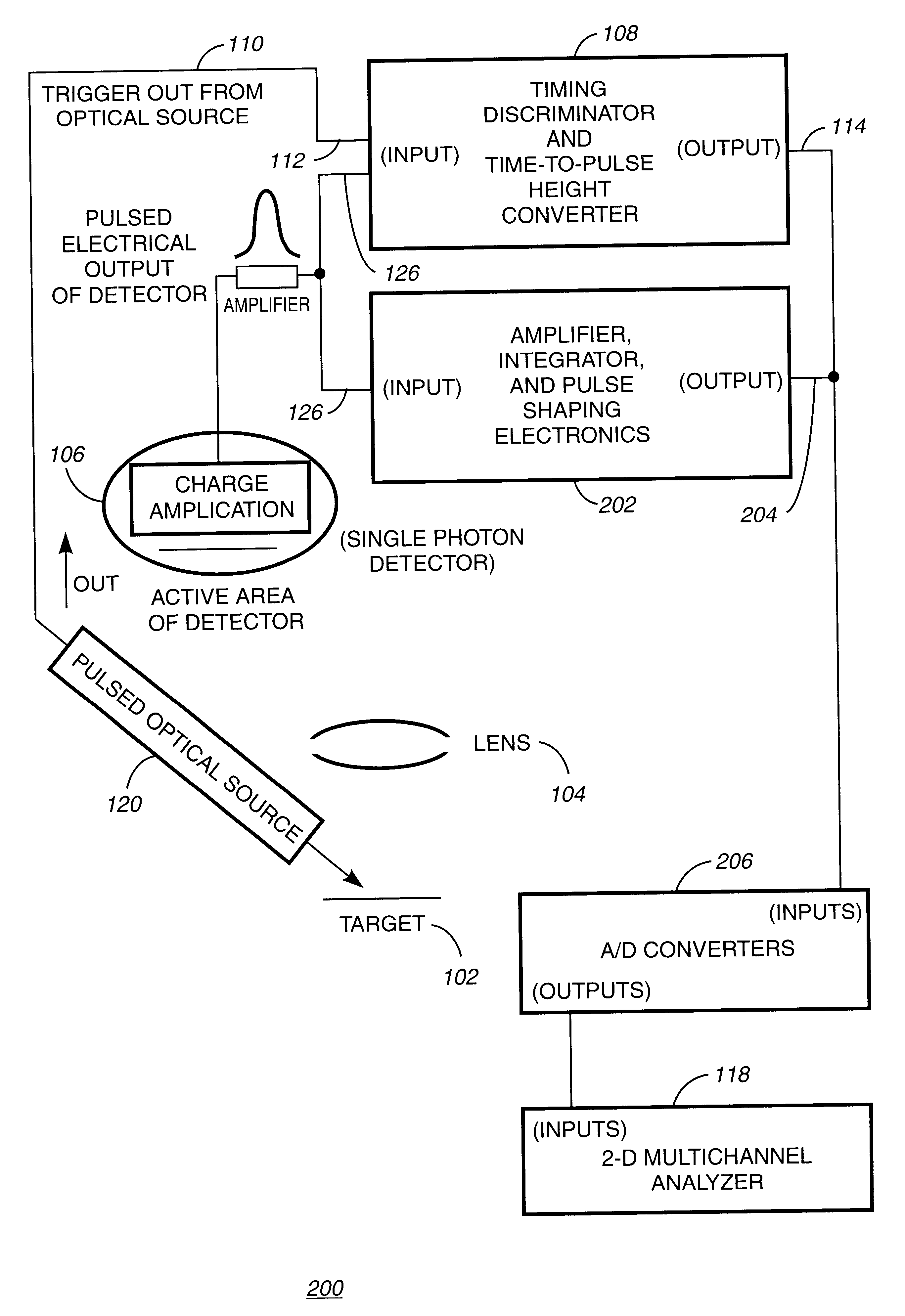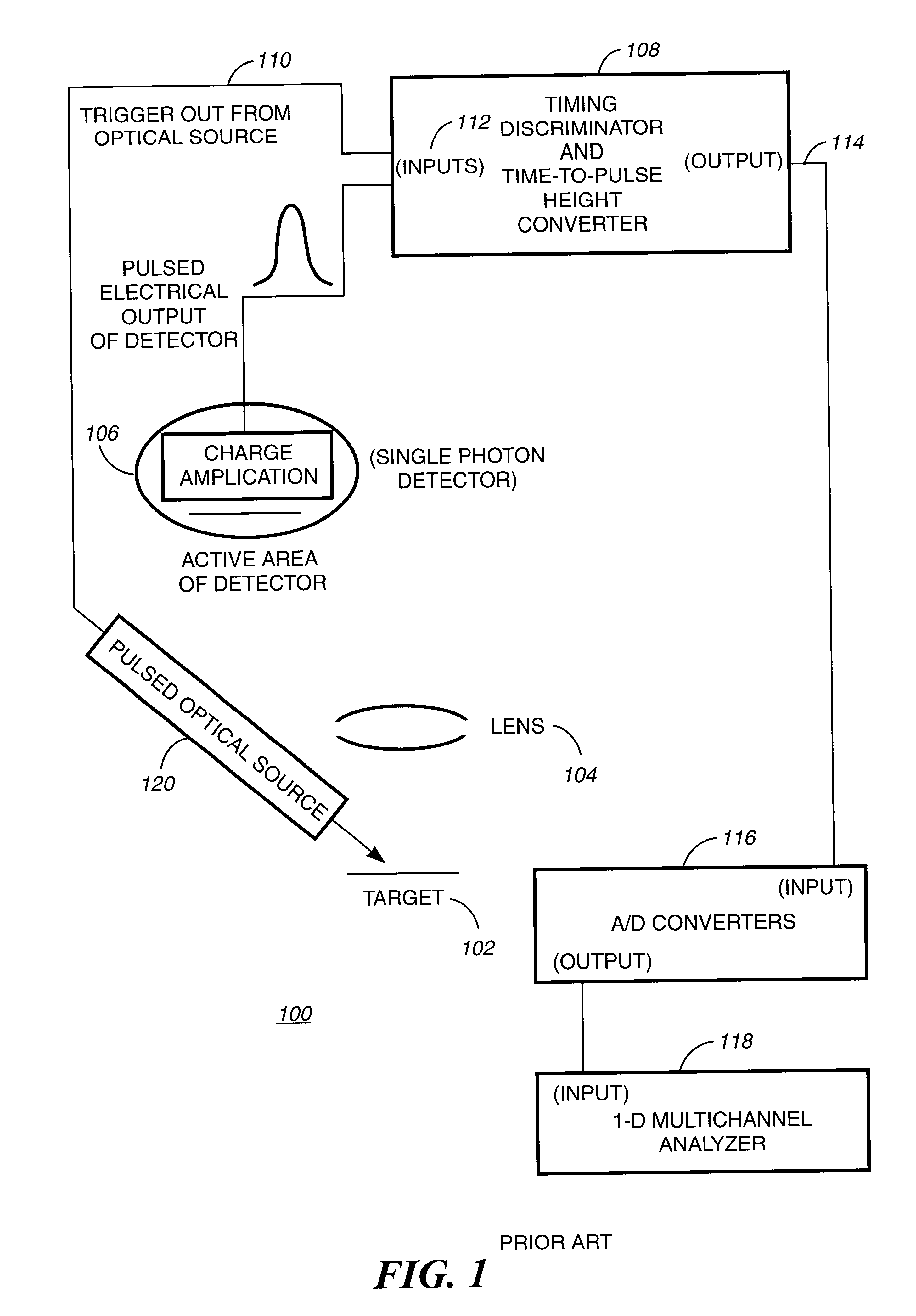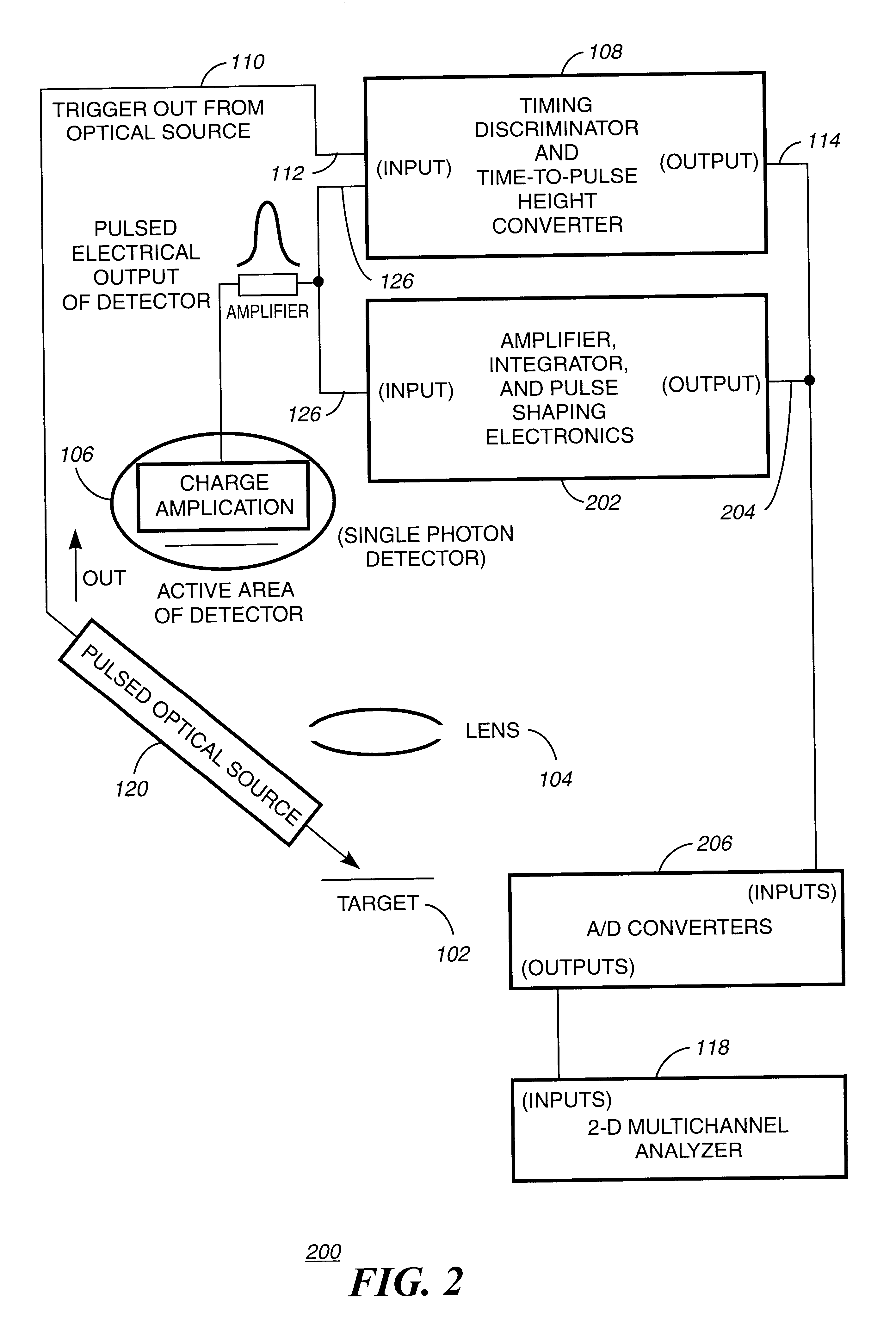Time correlated photon counting
a technology of time-correlated photons and counting, applied in the direction of fluorescence/phosphorescence, luminescent dosimeters, optical radiation measurement, etc., can solve the problems of difficult determination, and inability to accurately time pulses outside this rang
- Summary
- Abstract
- Description
- Claims
- Application Information
AI Technical Summary
Problems solved by technology
Method used
Image
Examples
Embodiment Construction
Referring now in more detail to the drawings in which like numerals refer to like parts throughout the several views, FIG. 2 is a functional block diagram of an improved TCPC time and integrated amplitude system 200 using a typical TCPC single photon detection system as system 100 of FIG. 1, with additional electronics according to the present invention. An amplifier, integrator and pulse shaping electronics, hereinafter simply referred to as pulse shaping electronics 202 are placed in a parallel path to converter 108. The pulse shaping electronics 202 has an input 126 which is coupled to the output of the single photon detector SPD 106. An output 204 is coupled to an A / D converter 206. In the system 200 the electrical pulses from each photon as read by detector 106 are characterized by a time difference as described in FIG. 1. The time difference is represented by an analog electrical pulse series of difference signals, each with respective maxima and whose magnitude is related to ...
PUM
 Login to View More
Login to View More Abstract
Description
Claims
Application Information
 Login to View More
Login to View More - R&D
- Intellectual Property
- Life Sciences
- Materials
- Tech Scout
- Unparalleled Data Quality
- Higher Quality Content
- 60% Fewer Hallucinations
Browse by: Latest US Patents, China's latest patents, Technical Efficacy Thesaurus, Application Domain, Technology Topic, Popular Technical Reports.
© 2025 PatSnap. All rights reserved.Legal|Privacy policy|Modern Slavery Act Transparency Statement|Sitemap|About US| Contact US: help@patsnap.com



